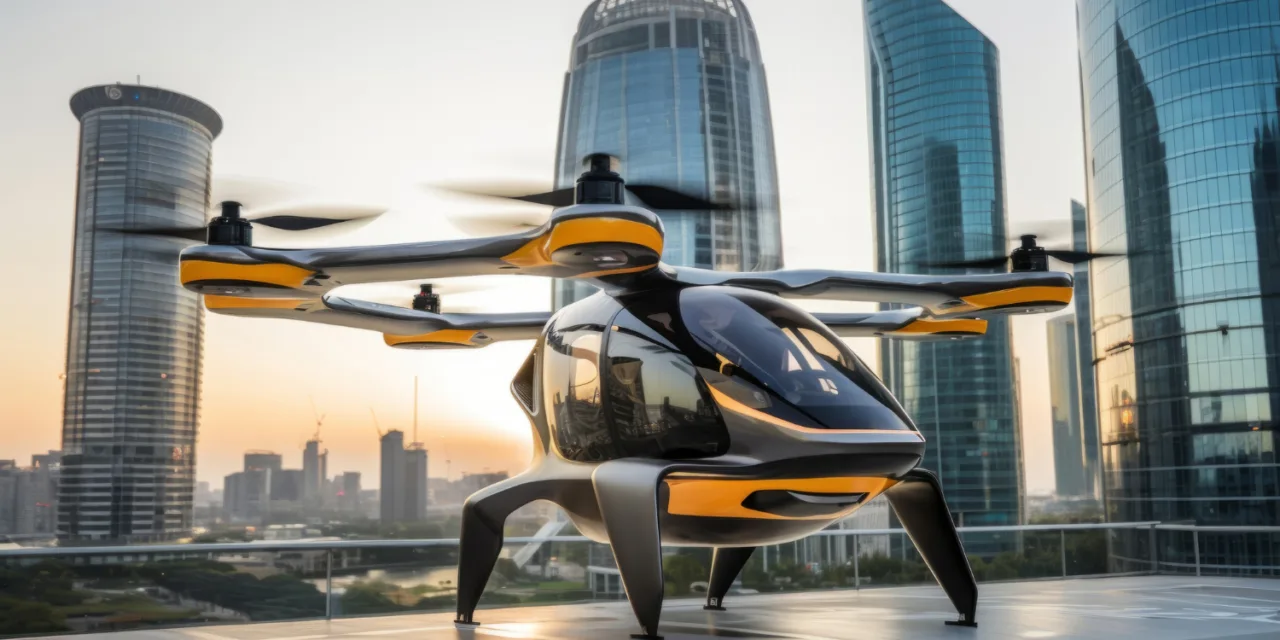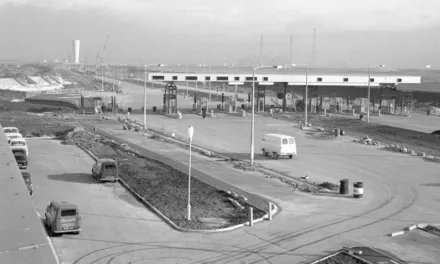Flying taxis, crime-fighting drones and critical 999 care deliveries could all be a reality by 2030 thanks to the government and industry’s joint Future of Flight action plan, announced by the Department for Transport (DfT).
Setting out a roadmap for drones and novel electric aircraft in the UK, the plan details how technology once confined to the realm of sci-fi could transform our skies, with studies estimating drone technology could boost the UK economy by £45 billion by the end of the decade.
It details plans for the first piloted flying taxi flight by 2026 and regular services by 2028, regular drone deliveries across our skies by 2027 and demos of autonomous flying taxis without pilots on board by 2030 – transforming how people and goods are transported.
Aviation and Technology Minister, Anthony Browne, said:
Cutting-edge battery technology will revolutionise transport as we know it – this plan will make sure we have the infrastructure and regulation in place to make it a reality.
From flying taxis to emergency service drones, we’re making sure the UK is at the forefront of this dramatic shift in transportation – improving people’s lives and boosting the economy.
The plan was unveiled on the same day the minister is due to visit Vertical Aerospace in Bristol – one of the UK companies making flying taxis and at the cutting edge of innovation in aviation.
These greener, quieter flying taxis are already undergoing the Civil Aviation Authority (CAA) authorisation process and have been made possible thanks to rapid advances in battery technology, meaning they are light enough to stay in the air and powerful enough to cover the distances needed.
Some of the other actions set out in the plan include:
- allowing drones to fly beyond visual line of sight (BVLOS) so that the sector can grow without limiting the skies for other aircraft
- breathing life into smaller aerodromes by setting out how they can operate as vertiports for electric aircraft that take off vertically (sometimes known as electric vertical take-off and landing (eVTOL) aircraft)
- developing standards to improve security for drones to boost public safety
- engaging communities and local authorities so that they can enjoy the economic and social benefits of these technologies
First imagined in the Flightpath to the Future in 2022, this joint plan between industry and government sets out the strategic direction of the sector over the next 5 years, striking a balance between innovation, security, safety and cutting emissions.
The benefits of this new technology are already being seen in the UK. West Midlands Police uses drones to tackle violent crime and antisocial behaviour. In July 2023, a drone team was deployed, successfully identifying 2 offenders and another suspect at a speed and distance that would have taken ground officers hours to track down.
Drones are also helping frontline NHS staff save lives. For 6 months between October 2022 and March 2023, the UK drone service provider Skyfarer partnered with University Hospitals Coventry and Warwickshire NHS Trust and Medical Logistics UK to test drones to deliver surgical implants and pathology samples between sites. In one case, drones reliably helped cut delivery times of surgical implants between Coventry and Rugby hospitals from up to an hour to just 18 minutes – a 70% decrease.
The Future of Flight action plan contains measures to make drone applications and assessments easier by creating new and simple digital platforms that operators can use – ensuring companies and public services are no longer shackled by red tape and get drones up and flying quicker.
It will also enable the development of vertiports – mini-airports for drones and electric aircraft that take off vertically – by developing certification standards and reviewing the use of existing infrastructure to deliver at speed, boost safety and security and put the passenger first.
Industry partners will also undertake multiple industry-leading trials to explore new ways to operate drones beyond the visual line of sight and demonstrate electric aircraft – keeping accidents to a minimum and making the most of technological advances. This could include finding and repairing faults quicker on our railways with fewer delays and cancellations for train passengers, providing new connections across the UK and using technology to help our emergency services.
The Future of Flight action plan comes ahead of the fifth meeting of the Future of Flight Industry Group, a joint force established in February 2023 for government and industry leaders to tackle the biggest challenges facing the sector and set ambitious goals as emerging aviation technologies become more commonplace.
Duncan Walker, Chief Executive of Skyports and Chairman of the Future of Flight Industry Group, said:
The UK is home to one of the world’s most important aerospace industries and is in an ideal position to be a pioneer in the next era of aviation. The government and industry have a joint commitment to support the development, industrialisation and introduction of new aviation technologies. Continued collaboration will ensure that we capitalise on the significant domestic and international market opportunities presented by the future of flight.
By supporting research and development in electric aircraft and drones, and with the help of key partners like the CAA, the action plan aims to usher in a new era of eco-friendly aviation and boost the economy with new investments, ensuring the UK captures the full potential of this emerging global industry as a force for good and a driver of growth.
Sophie O’Sullivan, Head of Future Safety and Innovation at the UK Civil Aviation Authority, said:
Aviation stands on the cusp of its next, potentially biggest, revolution since the invention of the jet engine. Drones, eVTOL and other different vehicles have the potential to change transportation options forever.
We welcome the firm direction the government’s Future of Flight action plan provides for the industry as it continues to innovate. Our role in this bright future of aviation will be enabling technological advances and providing regulatory support while ensuring that all forms of new aviation technology enjoy the same high safety standards as traditional aviation.
Anne-Lise Scaillierez, CEO of UK drone trade association ARPAS–UK, said:
Drones help professional teams capture data from the sky in a safer, cheaper, smarter and greener way and, in the future, they will help transport cargo and people. ARPAS–UK and the industry are looking forward to actively and collectively implementing the actions in the plan so that we can accelerate the safe use of drones by end-user industries. We thank the DfT, CAA and all involved parties for making it happen.
Not only is the Future of Flight action plan a testament to the government’s commitment to advancing aviation technologies, but it gives industry the confidence to continue breaking barriers in the sector. Vertical Aerospace, whose pioneering innovation in electric vertical take-off aircraft is creating a cleaner, quieter way to travel, is just one of several UK-based manufacturers that will benefit from the plan.
Stephen Fitzpatrick, Founder and CEO, Vertical Aerospace, said:
The UK has a long heritage in aerospace and the publication of this plan sets out how we will lead the next revolution of flight. With government and business working together, we can unleash the huge economic, environmental, and social benefits of zero emissions flight globally. Vertical is hugely proud to be at the forefront of leading this new chapter.


















